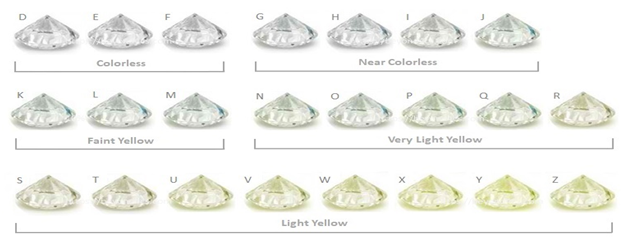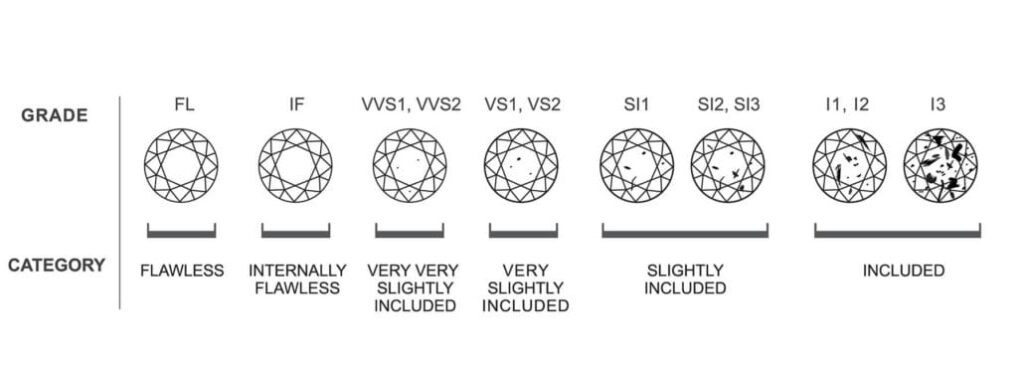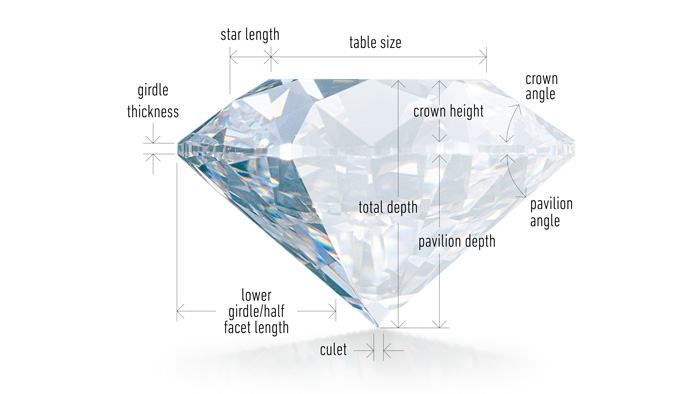Diamond Quality & The 4Cs
Learning about diamonds begins with an understanding of the basic characteristics, often referred to as The Four Cs. These are standards by which diamonds are graded, compared, and ultimately valued.
Understanding the ways diamonds differ from one another will help you understand the tradeoffs of the Four Cs against another important factor – price.
Diamond Color :- Each diamond is graded using a scale created by one of the leading gemological industry organizations. Graded on an alphabetical scale from D (colorless) to Z (light yellow), a diamond’s color rating indicates the degree of yellowness in the stone. The most valuable diamonds are usually completely colorless.

Diamond Carat –The Carat is the measure of the actual weight of the diamond. A carat is divided into 100 points. A 0.50 carat diamond may also be referred to as 50 points.
The greater the weight of the diamond, the more rare it is.
Carat weight is not always the same as size appearance.
The choice of how a diamond is cut is a critically important factor in determining whether a diamond looks its weight.
Stones that have too high a depth percentage carry more weight in the height of the diamond where it does not add to the visual size appearance.


Diamond Cut – A high quality diamond cut will result in a symmetrical, brilliant stone that reflects the maximum brilliance.
Cut refers to the angles and proportions of the diamond and determines how brilliant, beautiful and valuable the diamond is.
Cut is the only aspect of a diamond determined by the skill and artistry of the craftsman’s hand.
A finely cut diamond will have exquisite brilliance and beauty while maximizing size appearance.
Achieving the best cut is not about extra facets, special viewing devices or other gimmicks. It’s about using expertise to unlock the maximum brilliance from within the diamond.

